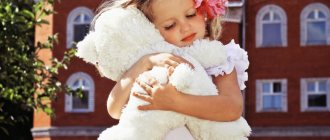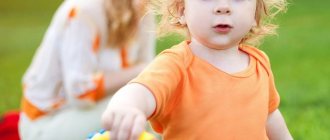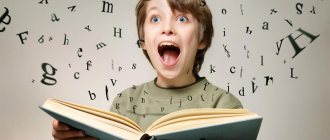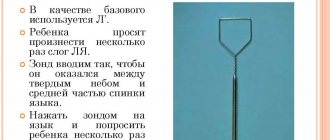A cheerful drum, a bright pyramid, a magic carriage, a terrifying dinosaur, a fast train, a teddy bear and many others await you! Toys are needed not only to occupy free time. Properly selected gaming material can become a means of successful development of a child, developing important social and behavioral skills,
development of speech, motor and physical activity. Using children's close familiarity with toys, you can conduct various educational and developmental activities on this topic.
studying toys
For example, you can organize a simple speech development lesson on the topic “Toys”. To do this, you will need pictures depicting the most frequently encountered objects in gaming activities, and, if possible, the objects themselves. If a lesson is being held in kindergarten, as a rule, assembling toys is not difficult.
First, we try to remember all the familiar toys. Pictures for children, drawn in the most realistic way, will help with this. When listing objects, we name the actions that can be performed with them.
Drum
Pyramid
Yula
Duckling
Soldier
Robot
Fire truck
Paravozik
Puzzles TumblerBallBearCarRockinghorseHorseDollhouseDollCubesXylophoneShipConstruction SetDoll StrollerGiraffe WheelchairCarriagePencilsDinosaurHarmonyHelicopterBicycleBucket and shovel
According to the above steps, we form several main groups of toys:
- construction - something from which you can build, design, create new objects;
- musical - those with the help of which we obtain various sounds;
- for role-playing games - those that have their own role in the game (animals, dolls, soldiers, as well as various pieces of doll furniture, houses, etc.);
- sports – ball, tennis rackets, bicycle, scooter, etc.;
- transport - cars, trains, etc.
Children's thinking differs from that of adults, so when distributing objects into groups, children sometimes offer the most non-standard solutions.
Then you can move on to a detailed description of the toys. Usually children are happy to join in this process if they have to describe their favorite toy. To make the task easier, we leave a simple plan:
- describe the appearance;
- what can you do with this toy;
- why does the child like her?
After such work, you can move on to an interesting game: one child must describe the toy without saying its name. The rest of the kids guess what they were talking about. With younger children, you can change the rules a little: the adult describes, and the children guess. Whoever guesses correctly receives a card with a picture of this item, then the result is summed up - who has more cards.
- You can ask a few simple riddles:
- Very similar to you:
- You have arms, legs - she has them too;
- You have eyes - she has eyes;
- Do you need any more tips? (doll)
- If there’s a whole bunch of us, we’ll build up a whole yard. (cubes)
- I am always ready to take off at a gallop - after all, that’s what children need... (ball)
- Only a daredevil can assemble me by gathering all my rings onto a rod. (pyramid)
- For me, falling is not a problem.
- I will always rise with a smile. (tumbler)
In conclusion, we move on to the artistic part: we try to draw the toy that we liked or remembered best. Before drawing, we once again remember all the toys; Pictures for children will help with this.
- We make sure to make an exhibition out of the drawings so that each child feels the significance of their work.
- Watch the video on the topic “Exploring toys”:
Source: https://montessoriself.ru/igrushki-kartinki-dlya-detey/
Toys – drawn pictures and coloring pages for kindergarten activities
The topic “Toys” must be used during speech therapy classes with preschoolers aged 2-7 years. Of course, the best pictures for children in kindergarten are Toys, which are specially selected for educational activities.
In the lexical material on this topic, several important “steps” can be identified, elements that must be mastered by preschoolers:
- The very generalizing concept of “toys”.
- Various names of items used for different types of games (story-based, action, etc.).
- General features and properties of toys, as well as their differences from other items.
- Ways to use certain toys.
- Features of their device.
- An idea of the material from which game items are made.
Here is a minimum list of words on the topic of toys for children that should be introduced into the active vocabulary of preschool children:
- Names of toys and their parts (nouns):
bear, bunny, dog, doll, car, ball, top, construction set, matryoshka, pyramid, head, torso, arm, leg, muzzle, paw, tail.
- Characteristics of items for games (adjectives):
* it is useful to teach them with children in pairs, comparing the properties of different toys.
Big - small, round - square, soft - hard, smooth - rough, fur - plastic, iron - wood, new - old.
- Various actions that can be performed with these objects (verbs):
Roll, carry, build, swing, dress, bathe, feed, wear, buy, lose, find, sew, play, collect.
Drawn pictures
For the formation of a passive vocabulary, pictures for children depicting various toys are of great importance. It is very good if they are presented in a wide variety, this allows you to offer the child many different speech exercises and activities.
For speech therapy games, it is much more convenient to use cards rather than real objects. Sorting and describing images not only contributes to children’s speech development, but also improves them:
- visual-figurative thinking;
- RAM;
- attention.
Of course, it is very difficult to draw such pictures yourself; it is better to find ready-made ones selected by professional speech therapists.
Coloring pages
To conduct classes on the topic “Toys” it is also very useful to use thematic coloring books.
They help the child not only learn and remember all kinds of names of objects for games, but also practice using a large number of descriptive adjectives (in descriptions of various colors and materials). A correctly selected coloring book is a real helper for speech therapists and parents!
Games
With “Toys” pictures you can conduct many simple and effective speech therapy activities aimed at developing the speech of preschool children. Here are some examples of such games:
Name the pictures
The development of children's speech is facilitated by naming the various toys depicted on the cards. It is important to choose the most realistic drawings, this helps the child quickly recognize this or that object. Such pictures of toys for children must certainly be bright and attractive in appearance.
What's missing here?
The popular logic game “Odd Four” can also be used in speech therapy classes.
During it, children are offered four images, three of which can be called in one word (“toys”), and one cannot; this card is selected from other categories (vegetables, plants, animals, transport, etc.).
This game helps to enrich and activate passive vocabulary, and also perfectly trains the attention and thinking of preschoolers.
Which? Which? Which?
Show your child one picture at a time from the set of “Toys” cards and ask him to list the properties of the object depicted on it. For example: a doll - new, elegant, plastic, curly, blue-eyed, big, new, etc. If you have pictures from the Toys for Children series on a transparent background, then it is better to use them in this game.
Call me kindly
This game is great for developing the skill of using diminutive suffixes on nouns. An adult shows children 4 years and older toys (in pictures or real ones) and asks them to name them affectionately. Examples:
What educational toys does a child under one year need?
From the first days of life
Parents buy their long-awaited child all kinds of soft toys, as well as a variety of rattles and pendants, which open up a treasure trove of educational toys. The first of them serve, first of all, for the timely development of children, the formation of perception and the initial elements of thinking, the distinction of shapes, sizes, colors, and materials. They also help expand awareness of sounds and introduce the baby to the diversity of the world around him.
In the first months of a baby’s life, there are no purposeful actions, which begin to take shape during the first half of the year.
The beginning of the development of hand movement is grasping. The child learns to hold objects in his hand and grasp them. Games with rattles
, so their choice should be given special attention.
It should be light enough, with an easy-to-grip handle. When a baby holds a toy in his hand, other actions are formed: squeezing and unclenching, shaking. For the first time, the baby learns the objective properties of objects: heaviness, length, position in space, character of sound. At 5 months
, when grasping, the fingers become more active.
And here it is appropriate to use toys aimed at developing fine motor skills. These can be pendant toys
with springs that the child needs to grab with his fingers and pull towards him.
At 6 months
The baby not only knows how to firmly hold a toy placed in his hand, but also take it from any position.
At 7-10 months
the child is already able to correlate play material with a specific place in space.
The baby puts toys in and out, removes large parts that have a through hole from the rod, and then tries to string them. To develop these abilities, it is good to use toys such as pyramids, insert cups, and nesting dolls. At this age, it is better if the pyramid
has a thick shaft and large rings. Parents need to ensure that all toys can be easily grasped by the child's hand.
From 8-9 months
the action of manipulating two objects appears (the child is able to hold two objects in both hands and interact with them, for example, knocking cubes against each other), imitation of the object actions of an adult.
For this age, various boxes are suitable that allow you to perform all sorts of actions: open and close, pull out, put in and insert. The game material includes special Seguin boards. (This is a wooden plate for inserting into the cut out outlines of objects. For example, 5 apples of different sizes - from large to small, each of which needs to find its place). This will allow the baby to learn to relate size and shape. Closer to one year,
the child can be asked to make objects from parts and separate the whole into parts. Therefore, it is useful to use a construction set from objects that are well known to children, having 3 components, where the parts overlap each other. For example, vegetables, fruits or kitchen utensils. However, the choice of toys at this age should be approached not only from the point of view of the educational function, but also pay special attention to the material from which they are made. Try not to give your baby toys whose paint coating is not durable. The material must not be toxic to avoid poisoning. And for now it is better to exclude wooden and rag toys. It is preferable to choose those made of good plastic or special rubber.
Rule! The main rule when working with educational toys is that you should not lay out all the game material in front of the child at the same time; it is better to alternate toys every 10-15 minutes so that interest in the game does not disappear. However, in order for the baby to start playing with such toys, he needs to be shown how to do it. It is very important to observe gradualism and consistency when playing with educational toys, and to take into account the child’s age capabilities. So, it is better to start with a small number of details and gradually increase them. Remember that these games must be organized by parents.
Cards “Toys”
There are norms for the formation of an active vocabulary in preschool children. Simply put, how many words should a child speak by a certain age?
It is believed that this active vocabulary should be 5-10 words per year. There are developed babies who speak many more words by the age of one year, but the majority of one-year-old children do not say anything other than “mom”, “na” and “give”.
What are passive and active vocabularies in a child?
There are norms for the formation of an active vocabulary in preschool children.
Simply put, how many words should a child speak by a certain age? Here is the table:
| Age | Word count |
| 1 year | 5-10 words |
| 1.5 years | 20-40 words |
| 2 years | 50-200 words |
| 3 years | 800-1000 words |
| 4 years | 1600 – 1900 words |
| 5 years | 1900 – 2200 words |
| 6 years | 3,500 words |
Mothers, having learned about this, clutch their heads.
Judging by the table, it is believed that this active vocabulary should be 5-10 words per year. There are developed babies who speak many more words by the age of one year, but the majority of one-year-old children do not say anything other than “mom”, “na” and “give”.
- But!
- It turns out that we need to count correctly.
- If a child calls porridge, his sister Katya and his bed with the word “Katya”, clearly understanding what he means, this word “Katya” must be counted as 3.
In addition to the active dictionary, that is, the words that the child pronounces, albeit poorly, there is a passive dictionary. These are the words that the baby understands, even if he doesn’t speak. If you say to a child: “Bring the remote control,” and he goes and brings the TV remote control, then he accurately understands these two words “bring it” and “remote control.” They are part of his passive vocabulary.
Passive vocabulary is tested using cards. The child is told: “Show me the ball,” and he must point with his finger at the card with a picture of a ball.
To develop a child’s vocabulary, you need to work with him. That’s why I post a lot of cards with pictures on the site.
- At the top of the menu there is a GAMES item, there you will find many different cards.
- Well, here are cards with toys.
- They need to be downloaded and printed.
- It's best to have 4 cards on a standard sheet of paper.
Toy cardsToy cardsToy cardsToy cardsToy cardsToy cardsToy cardsToy cardsToy cardsToy cardsToy cardsToy cardsToy cardsToy cardsToy cardsToy cards
A set of educational games on the lexical topic “Toys” for children of senior preschool age
Description:
Methodological recommendations for a set of educational games on the lexical topic “Toys” for children of senior preschool age, compiled by the teacher of GBDOU No. 116 of the Nevsky district Olga Vladimirovna Spiridonova
The project was completed as a final work on advanced training courses at the Educational Technologies Center. Project manager – Porokhova I.A.
The goal of the project: the development of attention, memory, visual and figurative thinking, the formation of spatial thinking through the joint activities of a teacher and children using modern computer technologies.
Tasks:
- expand children's understanding of objects in the surrounding world,
- develop speech, observation, memory, attention, mental activity, hand motor skills,
- cultivate interest in the game, the ability to bring an activity started to its logical conclusion, develop independence, patience, perseverance.
The manual consists of 15 slides, 12 of which are directly educational games (one slide, one game). The first slide is the title page, the second is the content, the last slide is the final one.
Before you begin, you must enable macros; without them, some tasks will not be possible. Information about the need to run macros appears automatically when you launch the first slide. Hyperlinks located on the slides in the lower left corner lead to the next or previous slide; a hyperlink with an image of a house leads to slide 2 - “Contents”.
Slide 1. Title page. Contains information about the author and the title of the manual. To move to the next slide, click on the hyperlink in the lower left corner.
Slide 2. Contents. With its help, you can choose a game based on the child’s wishes or the current educational situation. The game is selected by clicking on the button next to the game name.
Slide 3. Game “What’s missing?” An analogue of the Japanese game is Sudoku. Goal: development and training of logical thinking, memory, perseverance. It is necessary to fill in all the cells so that not a single picture is repeated twice in a row or column. When you click on the pictures that are located to the left of the table, they become movable and move behind the mouse. Having dragged the picture to the desired table cell, click on the picture again and it becomes motionless.
Slide 4. Game “Find 5 differences”. It is necessary to find differences between the pictures. The actions are performed in the figure on the left. When you click on the location where a difference is detected, a blue circle appears.
Slide 5. Game “How to draw a dog.” At the bottom there are buttons with numbers from 1 to 5. At the top, in a chaotic order, there are picture diagrams that will teach children to draw a dog. When you click on the picture, it starts to rotate. While the rotation is happening, the child has time to select the desired button. As soon as the rotation stops, you need to click once on the selected button. If the choice is correct, the picture will move to the desired button; if there is an error, it will remain in place. The game ends when all the pictures have been moved.
Slide 6. Game “Find the horse’s shadow.” The task is to choose from 5 shadows the one that matches the picture. When the mouse clicks on the wrong shadow, the child will hear the phrase “Oh, try again”; when the mouse clicks on the correct shadow, the horse will move to its shadow, and the task will be considered completed.
Slide 7. Game “Find a Pair”. Purpose of the game: development of attentiveness, memory, intelligence. When you click on a butterfly, the curtains open for a few seconds, covering the paired pictures. The child must remember where the pairs are located. Then the curtains close. The child opens the curtains with a mouse click, selecting paired pictures. If the child opens the curtain incorrectly, the curtain closes again with a mouse click.
Slide 8. Game “Collect a picture.” The goal of the game is to complete the puzzle. The game develops children's attentiveness, imagination, and ability to navigate on a plane. You need to click on a puzzle element and drag it to the desired place with the mouse; clicking again will fix the element in the desired place.
Slide 9 . Game "What's extra?" The slide shows 4 toys - three are soft toys, the fourth is a wooden pyramid. When you click on the pyramid, a fireworks display appears and applause is heard, which means that the task was completed correctly. If the choice is incorrect, the child is asked to try again.
Slide 10. Game “Arrange the nesting dolls by height.” The task is to mark the nesting dolls, starting with the largest and ending with the smallest. When you click on a matryoshka doll of the required size, a smiley appears; if there is an error, nothing happens. When the task is completed to the end, the inscription “Well done!” appears.
Slide 11. Game “Read by first letters.” Purpose of the game: development of phonemic awareness, the ability to isolate the first sound in a word and write it using a letter, the game reinforces reading skills and sound-letter analysis of words. You need to put the word together using the first letters of the pictures and read it. To do this, the child must highlight the first sound in the name of the picture, which is located under the square. After the sound is named correctly, the child clicks on the corresponding square and the letter indicating this sound appears.
Slide 12. Game “Find 2 identical balls.” Purpose of the game: to promote the child’s development of attention, logical thinking, develop the ability to classify objects according to essential characteristics, and self-control skills. When you click 2 identical balls, bells ring and the balls begin to spin. If the ball is chosen incorrectly, children hear an error message.
Slide 13 . Game "Find all the toys." The slide shows the outlines of various toys. The child’s task is to find all the toys. When you click on a toy, a red circle appears. In the case when all the toys are marked, when you click on the question mark, the inscription “Well done!” appears. If not all toys are marked, when you click on the question mark, the message “Look for more” appears.
Slide 14. Game “Place toys in boxes by color.” The goal of the game is to sort the toys by color and put them in the appropriate boxes: blue toys in a blue box, red toys in a red box. Clicking the mouse on the toy will cause it to spin. While the toy is spinning, select the desired box and click on the selected box. If the choice is correct, the object moves into it; if there is an error, it remains in place.
Pictures of toys
This post contains toys for every taste and color. All of them, of course, are intended for children, but adults also like them; the pictures of the toys are also interesting for adults. Childhood never leaves us. Pictures of toys are popular on the Internet.
The picture shows a funny bear toy with a bow. The toys are wonderful!)
Picture of a big-eyed bear. Children love these dolls.
The pig toy is very cute. The child will be delighted with such a gift for the New Year!)
The pig toy is very cool!
The pig toy is a symbol of the next year 2021!
Toy pig with piglets in dress pockets! Wonderful toy!)
A pretty girl pig toy with blue eyes!)
A toy pig with piglets for the delight of little children!)
Wonderful toys three little pigs: a boy pig and two girl pigs!)
The pig toy looks wonderful against the greenery background!)
Piglet toy - soft toy. Such a cute little pig, I just want to hold him in my hands!)
- The piggy toy is very cute.
- Funny piggy toy girl in a dress and a bow!)
- A toy pig and piglets look great on a soft sofa, because they themselves are soft toys!)
Cute piggy toy - soft toy. Children love soft toys.
- Wonderful toy horse in the photo.
The well-known spinning top toy in the photo! Who didn't have fun with it as a child? Movable toy! Toys of our childhood!)
Snail toy on wheels. Funny face in the photo.
A toy monkey with a banana in his hand. Funny monkey.
The photo shows the well-known Barbie doll. Gorgeous! Girls love these toys! Pictures of dolls are like the dolls themselves for girls!)
- Another monkey doll in the picture is waving his hand in greeting.
The dog toy touches. Little dog. Children's favorite soft toys!
The picture shows a funny bear laughing. Pictures of toys with bears are popular.
A dump truck toy is preferable for boys. Boys like these toys!
- A toy fire truck for boys. Boys love pictures of toys with cars
- The picture shows another spinning top toy with a long handle.
Another toy dog. Lop-eared dog.
Cool toy steam locomotive. Pictures of your favorite childhood toys bring back memories!)
- Horse toy on wheels.
- Adorable Barbie toy
There is a funny monkey in the picture. A funny toy.
- Three animal toys: a bear, a rabbit and a cat are as cute as pictures!)
Funny toy snowman. He has a hat on his head and a carrot instead of a nose.
Funny toy kitten. So fluffy.
- Funny bunny toy
- Attractive fairytale Cheburashka toy
- The Snow White doll is also a fairy-tale heroine
- Wonderful toy bear with a bow
- A unique bunny toy
- Funny toy kitten
- Another funny horse toy
Baby doll toy. Such a cute little doll. These are such wonderful pictures!)
- The most beautiful Barbie toy
- These are the pictures of toys!
Source: https://andrey-eltsov.ru/kartinki-igrushki/
Didactic toys for every stage of child development
From the above, we can come to the conclusion that the toy itself is not able to solve the issue of teaching or raising a child. Only an adult makes a child interested in a toy, and most importantly, teaches him to play with it, and not to perform primitive manipulations.
The place of didactic toys in the formation of a child’s personality, from birth to elementary school, cannot be overestimated. Didactic toys are designed to develop the processes of formation of a child’s healthy psyche, associated with perception, memory and thinking, through solving developmental tasks that correspond to the child’s age parameters.
Up to one year, through games with didactic toys (pyramid, cubes, balls, etc.), the toddler will learn to identify the signs and characteristics of objects - colors, variety of shapes, sizes and relationships between them. By performing game tasks to select them by identity or vice versa - differences in other games of this type.
When organizing games with educational toys for adults, the main rule will be
gradualism and sequence of actions. All toys are not provided to the child at once; they are rotated in order to maintain the child’s passion for play. It is mandatory to show children how to play, while taking into account the child’s actual abilities based on his age. Starting with a limited number of toys and aids, gradually add them as the child masters the game.
As age changes, tasks should also change based on the child’s intelligence capabilities. In accordance with this rule, toys are selected to help him in his development.
So, after a year baby
will already be able to compare objects and correlate them with spatial objects. To consolidate these skills, there are toys, under the general name “mailbox”, made in the form of a plastic box with slots in the shape of simple geometric shapes; during the game, the child is invited to put objects that correspond in shape into the slots.
Developing an ear for music and a sense of rhythm
You can use games using a drum, a children's pipe, bells, a xylophone and other simple play musical instruments, choosing them based on the purity of the tone of their sound.
From one year onwards child
one can be taught to act in accordance with an existing model, so to speak, according to instructions. Special didactic games with samples will teach you how to build a house or a flower. You need to start playing together with your child so that he gets the essence. The elements should be large enough and there should be a small number of them, no more than 7.
You can move on from this later
to collecting puzzles, of which at first there should also be 5-6 units, of a substantial size. The image for them should not contain images of small details; generally one, maximum two objects in the picture are enough. The color of the figures should contrast noticeably with the background, and the object itself should consist of 2-3 elements. You need to collect puzzles together with your child several times, after which he will begin to do it himself. As you master this skill and age increases, you need to increase the number of elements.
Growing up must be accompanied
such family games as “Dominoes”, “Loto”, so far simply with images of animals, plants or objects. Next, I should complicate the tasks by organizing games with questions, for example, “Who is their mother?” - about animals; “Whose tools are these?” - by profession, then you can play word associations.
When approaching school and in the elementary grades, games can have an educational focus related to letters, syllables, words, numbers, examples of arithmetic and to consolidate the multiplication table, as well as other subjects of the school curriculum that can be taught in the form of a game.
The article was compiled based on materials from websites and forums for parents: dou83.rybadm.ru; lubmdoy53.edumsko.ru; nsportal.ru; books Vygotsky L.S. “Imagination and creativity in childhood. Psychological essay"; A. Kurpatov “Happy child. Universal rules" and educational practice of employees of the private institution Children's home "Solnyshko" of the Republic of Kazakhstan domsolnyshko.kz/o-nas/o-detskom-dome/
Pictures of children's toys
Pictures: children's toys. 34 pictures for speech games with preschoolers on the topic “Toys” at home and in kindergarten.
Give your child a picture and he will talk! By playing speech games with toys, you can solve many problems in children’s speech development.
Today I have prepared for you, dear readers of “Native Path”, a set of 34 pictures on the topic “Toys” for speech games and activities with preschool children. You can use this set of pictures for:
- paired picture games,
- to compare toys (how they are similar and how they are different),
- for making riddles about toys (This toy is plastic, it has...., it is very..., you can use it...),
- for the game “What is missing” (there are no ribbons, cars, dolls, nesting dolls, etc.),
- for the picture store game (The buyer’s task is to describe the picture that he wants to buy in the store, without naming the toy. The seller’s task is to guess the toy, you can ask additional questions) and many other speech games.
- You can learn how to play with pictures from the “Toys” set from the article - “Speech Development: Toys” - speech games and exercises for preschoolers about toys.
- The set for speech games on the topic “Toys” includes pictures:
- Girl Tanya and her toys.
- Boy Vanya and his toys.
- Three toy bunnies - learning to compare and describe toys.
- Paired pictures (singular - plural nouns):
- drum - drums
- wheel - wheels
- ring - rings
- cube - cubes
- doll - dolls
- ribbon - ribbons
- shoulder blade - shoulder blades
- horse - horses
- matryoshka - nesting dolls
- car - cars
- bear - bears
- ball - balls
- pyramid - pyramids
- airplane - airplanes
- jump rope - jump ropes
- duckling - ducklings.
You can download a free set of pictures on the topic “Toys” for speech classes with children using the link -
https://disk.yandex.ru/public/?hash=0zfKjZ99FJxl8VYzqj6Aa1GqmlC4p9ss0DA1XfPLq2s%3D
Poems about toys: 56 poems for children of early and preschool age can be found in the article “Poems about children's toys”
You will find interesting games for speech development on the topic “Toys” in the article “Speech Development: Toys”
I wish you interesting games! And good luck in developing the speech of your kids!
+
- Get a NEW FREE AUDIO COURSE WITH GAME APPLICATION
- “Speech development from 0 to 7 years: what is important to know and what to do. Cheat sheet for parents"
- Click on the link or course cover below to subscribe for free
- The author of the course is Valasina Asya, candidate of pedagogical sciences, author of the website “Native Path”
Source: https://rodnaya-tropinka.ru/kartinki-dlya-rechevyh-igr-s-det-mi-po-teme-igrushki/
List of educational toys for a child 1-2 years old
From the second year of life, the variety of educational toys increases significantly. At this age, the baby continues to explore the world around him, which is unknown to him. Children learn to perform actions that require relatively complex manual skills. They get acquainted with the physical properties of an object (mass, mobility, etc.), with quantity (one, many, few).
Classes with didactic toys actively develop hearing, vision, thinking, memory and imagination, fine motor skills of the fingers and coordinated movements of the hands. Curiosity is formed, a steady interest in bringing the matter to completion.
At this stage, all toys from the previous period are retained, but the number of parts that make up a complex toy increases, and possibly the size. In a pyramid, the number of rings can reach up to 10. By stringing and removing rings of different sizes, first with an adult, and then on his own, the child will understand that a larger ring is followed by a smaller one, etc. You can continue to insert the bushings in and out of the holes. They can be the same or different sizes. Such a toy promotes the development of not only fine motor skills, but also speech, if, while performing actions with it, an adult tells a fairy tale, encouraging the baby to continue the story.
At this age, a child can perform tasks on selecting, correlating, grouping toys by similarity or difference, which develops his thinking. For example, a child can separate red balls from blue ones, balls from cubes, and choose sleeves of the same size. To conduct such games, it is possible to use construction sets.
, which will further serve the child in the development of other functions. The parts of the construction set must be of medium size so that the child can hold them in his hand. You shouldn’t pour out all the cubes; it’s better to get 5-6 pieces first. Here the elements of the first constructive activity appear, promoting the development of thinking and imagination. For example, build a house or a tower with your child, he can already place one cube on top of another.
Also, using the constructor, you can build all kinds of labyrinths
and roll the ball inside them, first with your hand, and then with the help of some elongated object (stick). This promotes the development of fine and gross motor skills and hand coordination. To develop these functions, labyrinths made of wire are also suitable: all kinds of figures are strung on it, which must be “guided” along the path.
After a year, the baby can also be offered so-called “mailboxes”
, which are a plastic box. Geometric shapes are cut out on its walls, and children insert objects that match the contour into these holes.
First you need to show the simplest “mailbox” with 2-3 geometric shapes (circle, square, triangle).
Rattle, drum, xylophone, metallophone, whistles, organs, tambourines - all these are musical toys
. Their purpose is to promote the development of musical ear and rhythm, so they must have a clear sound.
When a child begins to walk confidently, he needs toys that develop movements, for example, all kinds of gurneys
(on stable wheels and with a stick or a baby-friendly handle for gripping). He will also be interested in musical rugs, where steps and paths are drawn.
By the end of the second year of life, you can surprise your baby with cut-out pictures.
from 2-4 parts. The same goes for cubes. It is better if it is one drawn object, a character, and not a plot picture with small images of heroes.
A selection of games and exercises on the topic “Toys”
Davydova Svetlana Alekseevna.
(Material on the same topic is on our website in the form of lesson notes for children 1-2 and 2-3 years old. The games and exercises there are selected based on the age and skills of the children, and in this collection we have prepared and collected a large number of tasks and exercises in addition to those already contained in the notes).
Goals:
Enrich children's active vocabulary with words-names of toys. Form stable ideas about size, shape, color, quantity. Continue to introduce children to geometric shapes. Teach children to make a whole from parts.
Introduce children to an unconventional drawing technique - drawing with cotton swabs. Improve the ability to draw straight lines with a pencil, paste image details in the right place. Develop thinking, fine and gross motor skills.
Practice onomatopoeia, the ability to navigate in space, and coordinate movements with words. Improve concentration and attention span.
Cultivate a caring attitude towards toys.
Didactic game "Locomotive"
The game is aimed at developing visual-figurative thinking, elements of logical thinking, the ability to group objects according to their functional purpose, select generalizing words, develop visual memory, and develop attention.
The kit includes:
- 8 trains;
- a set of trailers with wild animals, pets, fruits, vegetables, clothes, dishes, toys, furniture.
From 1 to 8 children can take part in the game. The game is aimed at children aged 4 to 7 years.
Rules of the game: The trailers are laid out in front of the child, upside down. Then the teacher suggests taking one trailer at a time and attaching them to a specific train. It is discussed in advance with the child that carriages, for example, with domestic animals, will be attached to the blue train, and to the orange train, with wild animals (instead of animals, you can use another option for classification, for example, fruits and vegetables). Next, the teacher can ask the child to close his eyes, and at this time turn over some trailers and invite the child to remember what was in these trailers, or he can swap the trailers and ask what has changed.
Downloads: 1299, size: 1.7 MB, date: April 14. 2020











